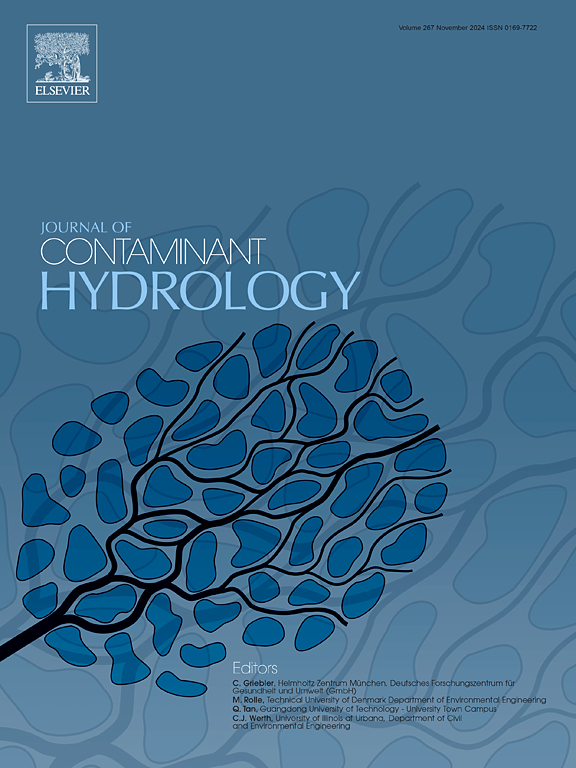Biochar-algae microspheres based on sodium alginate for the highly efficient adsorption of malachite green dye: Kinetics, isotherms, and mechanism of adsorption
IF 3.5
3区 环境科学与生态学
Q2 ENVIRONMENTAL SCIENCES
引用次数: 0
Abstract
In this study, biochar and Scenedesmus obliquus were coated with sodium alginate to prepare biochar-algal microspheres (BAM), and we investigated their adsorption properties on malachite green (MG). The results showed that 5.5 g of BAMs removed 98 % of 100 mg/L of MG after 120 h at 25 °C. In the isothermal adsorption experiment conducted at 25 °C, the adsorption capacity of BAMs for MG was 1.98 mg/g. Under these conditions, the adsorption capacity of BAMs was superior to that of biochar or algae microspheres alone, as well as their combined use. The BAMs not only addressed the issues of biochar recovery and secondary pollution, but also avoided the environmental sensitivity of algae, making BAMs a highly effective option for removing organic dyes.

基于海藻酸钠的生物炭-藻类微球对孔雀石绿染料的高效吸附:动力学、等温线和吸附机理
本研究以海藻酸钠包被生物炭和斜角藻为材料,制备了生物炭-藻微球(BAM),研究了其对孔雀石绿(MG)的吸附性能。结果表明,在25°C下加热120 h后,5.5 g BAMs对100 mg/L mg的去除率为98%。在25℃等温吸附实验中,BAMs对MG的吸附量为1.98 MG /g。在此条件下,BAMs的吸附能力优于单独使用生物炭或藻类微球,也优于两者联合使用。BAMs既解决了生物炭回收和二次污染问题,又避免了藻类对环境的敏感性,是去除有机染料的高效选择。
本文章由计算机程序翻译,如有差异,请以英文原文为准。
求助全文
约1分钟内获得全文
求助全文
来源期刊

Journal of contaminant hydrology
环境科学-地球科学综合
CiteScore
6.80
自引率
2.80%
发文量
129
审稿时长
68 days
期刊介绍:
The Journal of Contaminant Hydrology is an international journal publishing scientific articles pertaining to the contamination of subsurface water resources. Emphasis is placed on investigations of the physical, chemical, and biological processes influencing the behavior and fate of organic and inorganic contaminants in the unsaturated (vadose) and saturated (groundwater) zones, as well as at groundwater-surface water interfaces. The ecological impacts of contaminants transported both from and to aquifers are of interest. Articles on contamination of surface water only, without a link to groundwater, are out of the scope. Broad latitude is allowed in identifying contaminants of interest, and include legacy and emerging pollutants, nutrients, nanoparticles, pathogenic microorganisms (e.g., bacteria, viruses, protozoa), microplastics, and various constituents associated with energy production (e.g., methane, carbon dioxide, hydrogen sulfide).
The journal''s scope embraces a wide range of topics including: experimental investigations of contaminant sorption, diffusion, transformation, volatilization and transport in the surface and subsurface; characterization of soil and aquifer properties only as they influence contaminant behavior; development and testing of mathematical models of contaminant behaviour; innovative techniques for restoration of contaminated sites; development of new tools or techniques for monitoring the extent of soil and groundwater contamination; transformation of contaminants in the hyporheic zone; effects of contaminants traversing the hyporheic zone on surface water and groundwater ecosystems; subsurface carbon sequestration and/or turnover; and migration of fluids associated with energy production into groundwater.
 求助内容:
求助内容: 应助结果提醒方式:
应助结果提醒方式:


